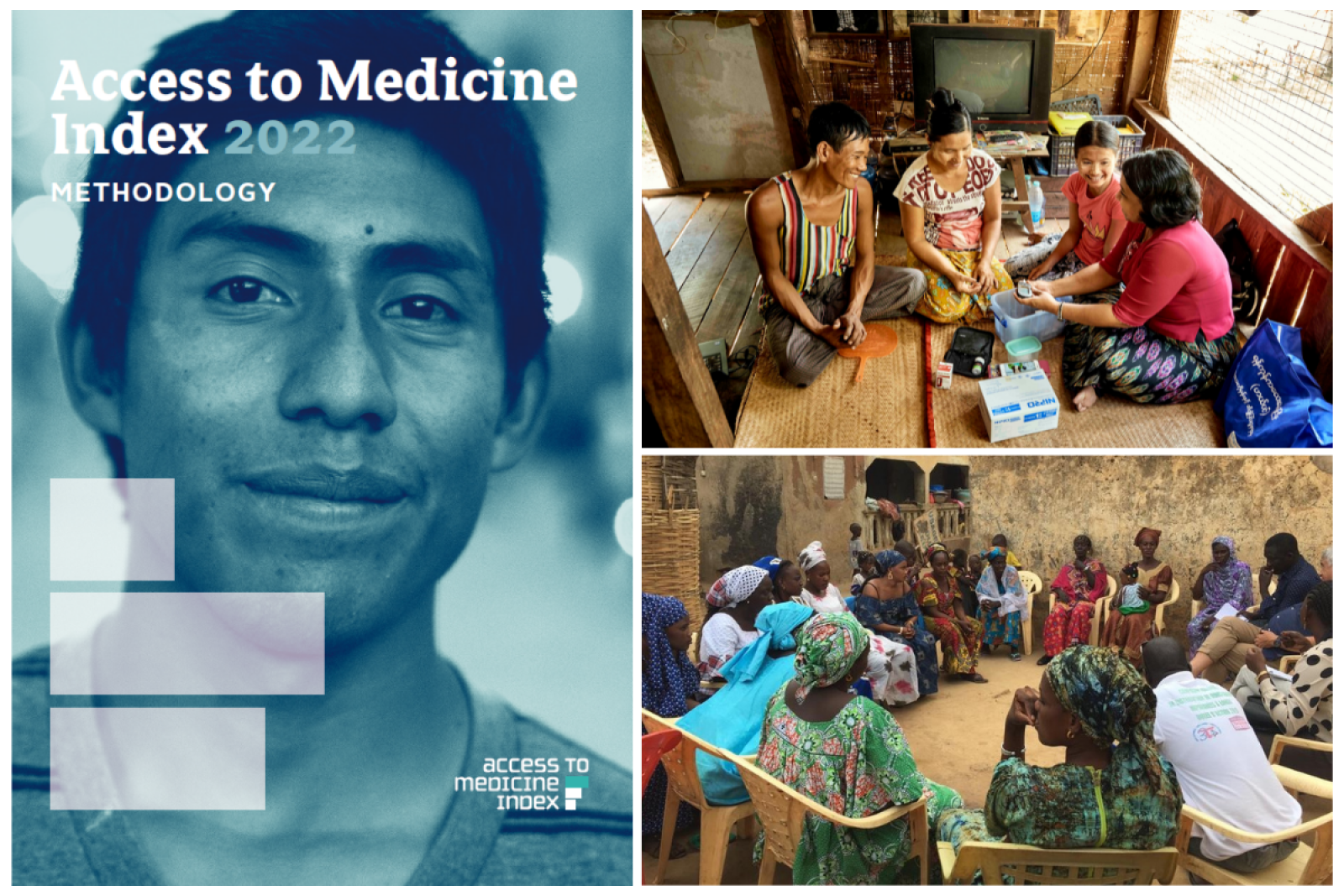Look ahead: what will the 2022 Access to Medicine Index uncover?
The 2022 Index will rank 20 of the world's largest pharma companies on how they perform on improving access to medicine for people in low- and middle-income countries.
It looks at companies' products and actions in relation to 83 diseases, conditions and pathogens.
The three special reports cover: pandemic preparedness, efforts to improve maternal health and access to contraceptives, and progress by the pharma industry towards achieving SDG3 by 2030.

Progress is not inevitable when it comes to global health. The COVID-19 pandemic, now in its third year, is having a negative impact on global health metrics almost across the board. It has disrupted childhood vaccination programmes as well as disease prevention and treatment initiatives, and put huge strain on medicine supply chains.
The pandemic also challenges industry, government and NGOs alike to reinvent old ways of thinking – such as how best to quickly reach people living in remote or resource-poor settings with the medicines they need.
The next Access to Medicine Index will analyse actions that pharma companies have been taking throughout the pandemic, since June 2021. In three special reports, it aims to join the dots between the destructive force of the pandemic, long-standing global health priorities, and the range of responses from the world's largest pharma companies:
COVID-19 products and pandemic preparedness: This special report will examine how pharmaceutical companies perform on ensuring access to the COVID-19 products in their portfolios, including the vaccines and treatments that are critical for protecting people living in LMICs from severe illness and death. The analysis will look at the specific actions companies are taking, e.g. on manufacturing capacity building, voluntary licensing, and pricing. It will also look to the future, by identifying products in R&D pipelines that target emerging infectious diseases, and whether access plans are already being put into place so that they reach the people who need them.
Women's health and SRHR: Women in low- and middle-income countries (LMICs) lose out when it comes to sexual and reproductive health and rights (SRHR). The COVID-19 pandemic has made an already challenging situation worse, for example by disrupting HPV vaccination programmes, postnatal care, and access to family planning services. This special report will evaluate how companies are responding to the challenge of increasing access to their products – and whether they are stepping up on women’s health and SRHR.
>> Read more about how the Index will cover SRHR.
Assessing progress in the long term: This will be the eighth edition of the Access to Medicine Index, which was first published in 2008. The continuity in the methodology for the 2022 Index will enable detailed longitudinal analysis of where progress has been made – and where it has not. This will provide the clearest picture yet of whether the industry is doing more to improve access to medicine, despite the challenge of the COVID-19 pandemic, and whether the UN's Sustainable Development Goal 3 (SDG3) can be met by 2030.
About the Index
The Access to Medicine Index is the longest-running assessment of the pharmaceutical industry’s actions to improve access to medicine in low- and middle-income countries (LMICs). It ranks the companies, tracks progress, identifies best practice, and demonstrates where action is urgently needed to improve access to medicine for some of the world’s most vulnerable populations. The Index is funded by the the UK Foreign, Commonwealth and Development Office (FCDO), the Dutch Ministry of Foreign Affairs, the Bill & Melinda Gates Foundation, Wellcome Trust and AXA Investment Managers.
In 2021, the Index was topped by GSK, with only a slim lead ahead of Novartis, Johnson & Johnson and Pfizer. It concluded that pharmaceutical companies are inching forward when it comes to access to medicine, with signs of progress in how they are integrating access to medicine into governance structures, R&D processes and monitoring efforts. Yet efforts to address access to specific products still remain focused on a few countries.
What is the scope of the 2022 Index?
The 2022 Index uses a framework of 31 metrics to assess the actions being taken by 20 of the world's largest research-based pharmaceutical companies to improve access to their products in 108 low- and middle-income countries. It covers 83 diseases, conditions and pathogens. These include common killers, such as HIV/AIDS, TB and malaria, to lower respiratory infections, diarrhoeal diseases, diabetes, heart disease, and dengue.
The Foundation produces the Index through a two-year cycle of methodology development, data collection, verification and analysis, supported by expert reviews by leaders active in improving access to medicine. The methodology reflects the consensus view on where pharma companies have a role to play in improving access, and is ratified by the Expert Review Committee.